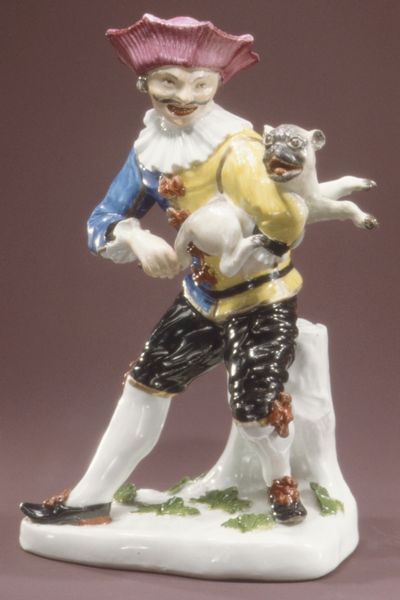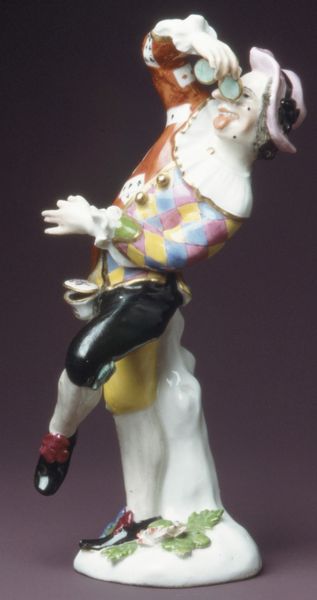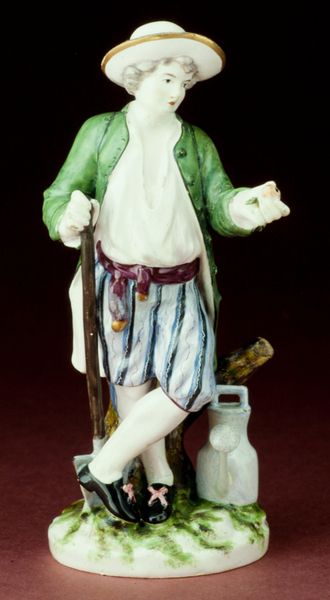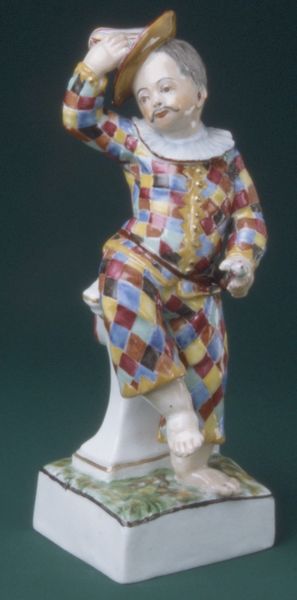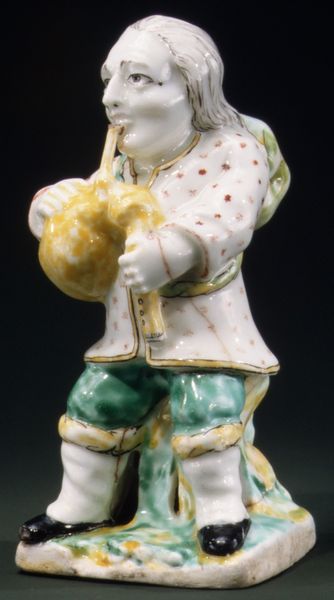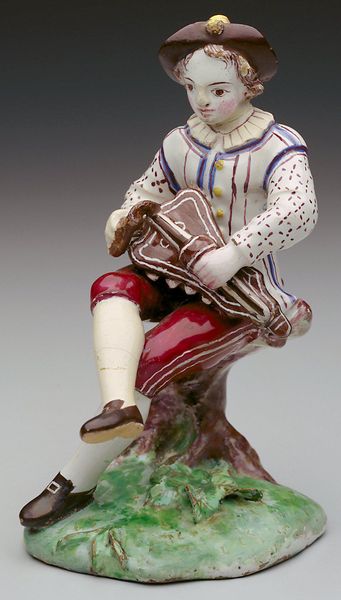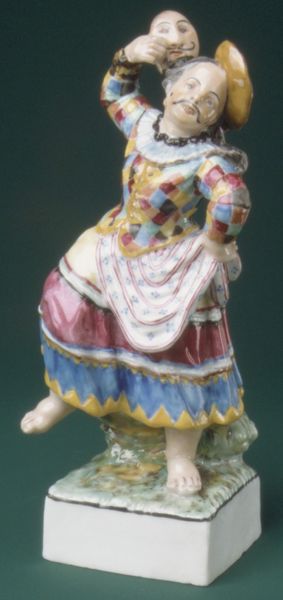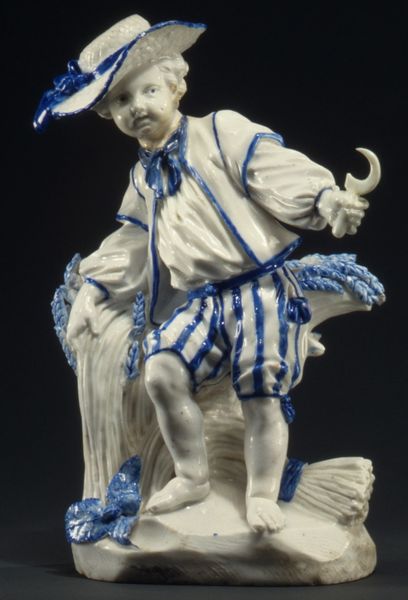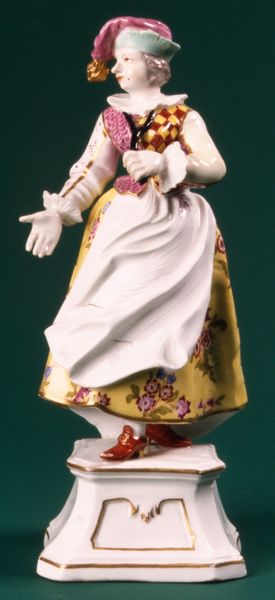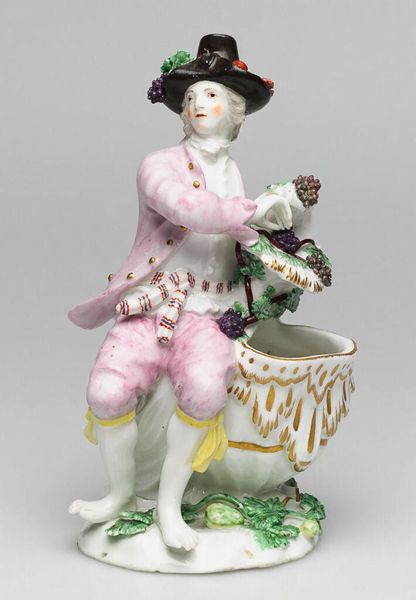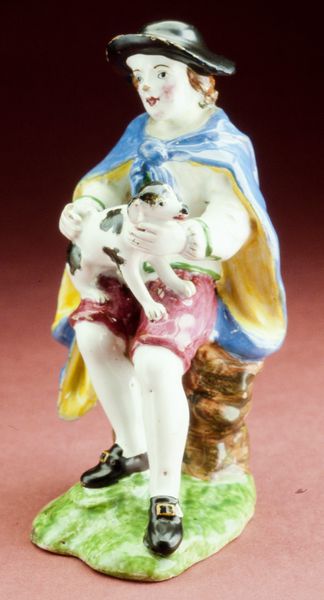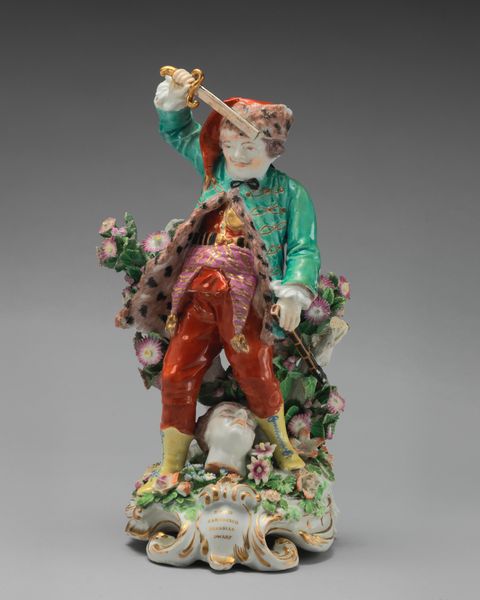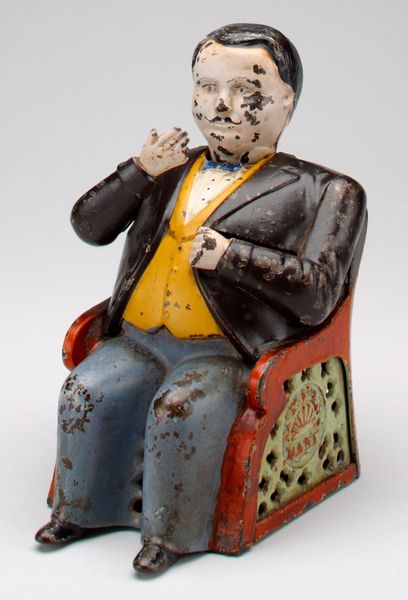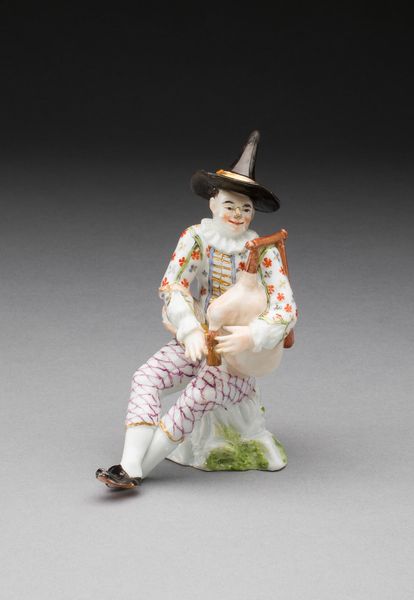
carving, ceramic, porcelain, sculpture
#
carving
#
ceramic
#
bird
#
porcelain
#
sculptural image
#
figuration
#
sculpture
#
men
#
decorative-art
#
rococo
Dimensions: Height: 5 1/2 in. (14 cm)
Copyright: Public Domain
Curator: What a whimsical character. Immediately makes me think of powdered wigs and playful courtly gestures. Editor: Absolutely. We’re looking at "Harlequin with Bird and Cat," crafted in 1743 by Johann Friedrich Eberlein. It's a porcelain sculpture currently housed at the Metropolitan Museum of Art. Such detailed carving work. Curator: The cat seems less than thrilled about the harlequin’s little bird trick! It’s like he’s conjured the thing out of thin air to bedevil it. I’m seeing this little drama as an elaborate game of appearances versus… well, a cat’s inner turmoil. Editor: Harlequin figures, part of the Commedia dell'arte tradition, often symbolized trickery, wit, and adaptability. The diamond pattern of his costume is immediately recognizable. What’s fascinating here is how the symbols have layered. The bird often suggests freedom, spirit or even the soul depending on which period you're focused on. The cage nearby might suggest thwarted freedom. What do you think about the blue color on this work? Curator: The blue is throwing me—not a colour you associate much with Harlequins. In truth, for me, there’s always been an edge of sadness to the Harlequin. I can't quite escape the association of ‘clown equals sadness.’ And maybe it is a very superficial understanding that the colour is amplifying! Perhaps it alludes to something a little bit melancholy in the character’s… spirit? It's interesting to ponder the psychology here, especially within a court setting. Editor: It also mirrors, perhaps consciously, a very particular fascination within Rococo art and design, in which porcelain figurines occupied an important status. We're invited into the world of courtly pleasure, but given how popular commedia dell'arte was, it might represent a social critique, too. Or at least, a form of symbolic play. The objects around him are so clearly symbolic! What's your take on that? Curator: Beautifully stated! I'd agree entirely with that "symbolic play." And, I think your understanding of symbolism adds dimensions, while for me this figurine almost starts a dialogue between artifice, identity and... emotion. This is probably why the Harlequin fascinates. There's a depth, and a sort of theatricality that invites us to be more attentive. Editor: Indeed. A tiny, charming, and thought-provoking porcelain fellow.
Comments
No comments
Be the first to comment and join the conversation on the ultimate creative platform.
